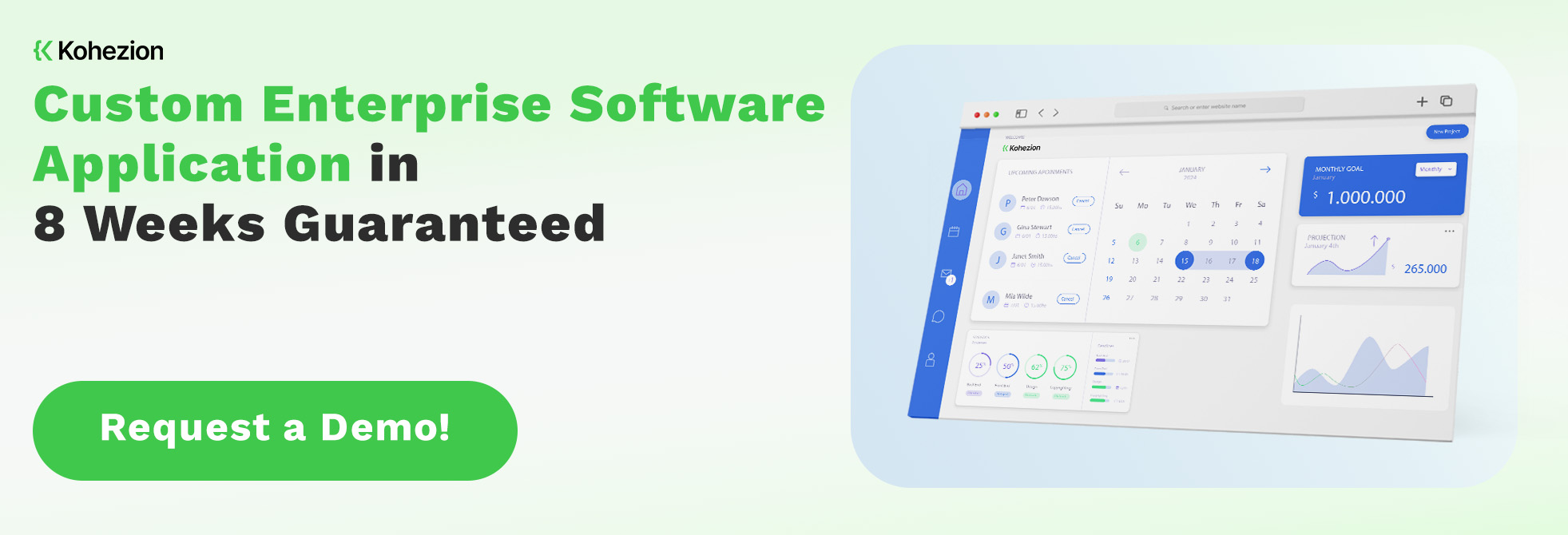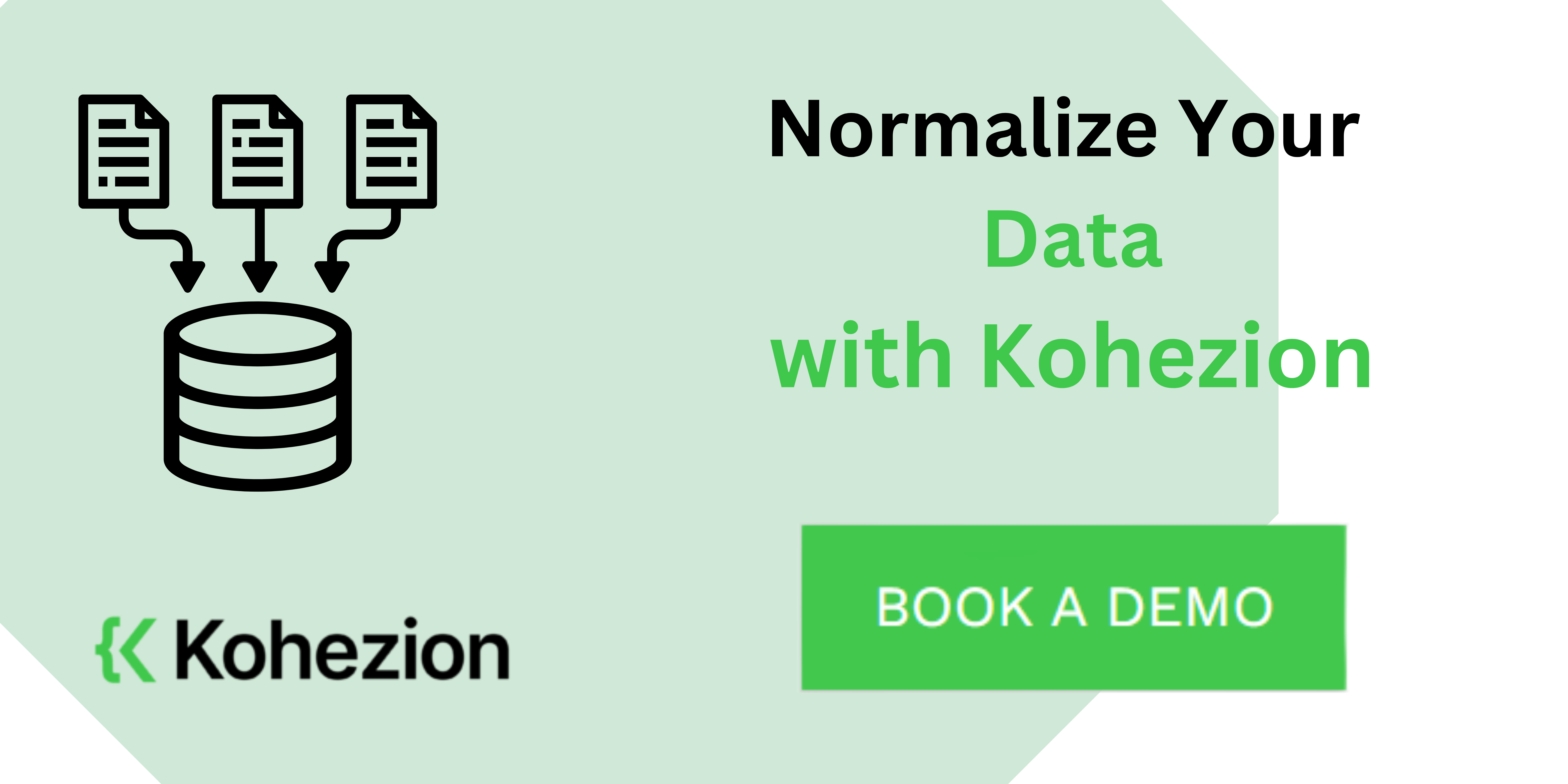According to a recent global study, business leaders believe the right data can improve decisions in HR (94%), finance (94%), supply chain (94%), and customer experience (93%). However, 72% of them admit they often don't make decisions due to the overwhelming data and a lack of trust in its accuracy. This is where data normalization can help.
Data normalization is a process of managing and organizing data to ensure that it is accurate and consistent. This article explores data normalization tools, what they are, how they work, and why they are important for your business.
We'll buid your first application for you. At no extra cost.
Let us build your first business application for free. Go from an idea to an application in under 2 weeks.
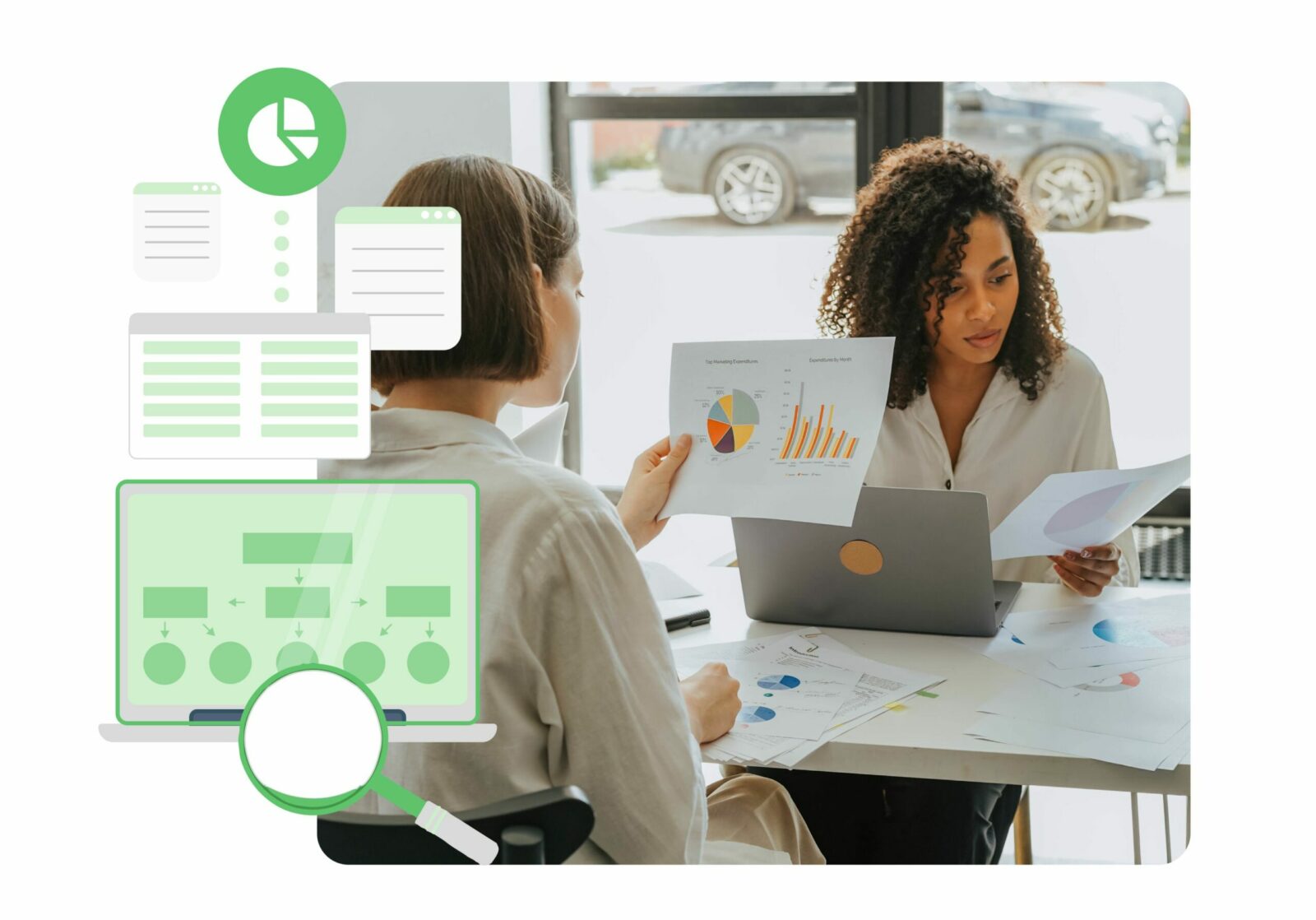
What Is Data Normalization?
Data normalization ensures that the data is systematically organized and standardized. The goal is to structure the data to minimize redundancy and complexity. For example, data like 'Ms. Anna’ will align with its standardized format rather than the informal 'Miss ANNA', and addresses or phone numbers are uniformly represented. This makes the data more coherent and optimizes it for querying and analyzing to enable smarter, data-driven decisions.
What Do Data Normalization Tools Do?
Data normalization tools transform raw, messy data into organized, usable information. They take disparate data sets and apply processes to clean, transform, standardize, and validate the data. This can involve stripping out duplicates, organizing data into the correct columns and formats, converting values to align with set standards, and linking related data across multiple systems.
For example, let’s say you have customer data from various sources like emails, phone numbers, addresses. A normalization tool can ensure each piece of information is formatted consistently across your entire database.
Benefits of Using Data Normalization Tools
Here are the key benefits of incorporating these tools into your data management process.
Improved Data Analysis and Decision-making
Stripping away inconsistencies and formatting issues makes the data highly reliable for analysis. You're uncovering patterns, trends, and insights previously obscured by data noise. This cleaner, high-quality data improves your decision-making process.
Increased Efficiency in Database Management
Data normalization tools organize information in an efficient, structured format. This eliminates the need for manual corrections and constant cross-checking. A well-organized database responds faster to queries, updates without a hitch, and is easier to maintain. This allows your database administrators to focus on more strategic tasks.
Better Data Integration and Compatibility
Data normalization tools ensure that different systems and software can easily share and integrate data. This means no more headaches over incompatible formats or data getting lost when moving from one platform to another.
Data Accuracy and Quality Assurance
Data normalization tools ensure that every bit of data entering your system meets high standards. They root out errors like typos to mismatched formats, leaving you with accurate data that you can rely on for any purpose. This enables precision in operations and strategy that was once hard to achieve.
Improved Data Consistency Across Systems
When multiple departments or business units enter data independently, variations are almost guaranteed. A normalization tool aligns all this data under a single umbrella of standardization. This fosters clear communication and reliable data insights across your entire organization.
Reduction in Data Redundancy and Duplication
Excessive copies of data can lead to confusion and inefficiencies in your systems. Data normalization tools identify and merge duplicates, leaving behind a single, authoritative data record. This tidies up your database and prevents the chaos of conflicting information. When you know there's only one version of each data point, you can proceed with confidence that any decision or analysis is based on a single source of truth.
Streamlining Data Migration and Upgrades
Data normalization tools offer smooth transitions during data migration and system upgrades. They ensure that the data is clean and organized, making transferring information from one database or system to another much simpler and faster.
Cost Savings Through Optimized Data Storage
Redundant data directly impacts your bottom line. Data normalization ensures that only essential, neatly organized data takes up residence. They allow your organization to operate leaner, with a tighter grip on storage costs and on your Total Cost of Ownership (TCO).
Facilitation of Compliance with Data Regulations
Data normalization tools keep data consistent and easily auditable to help you maintain compliance with standards like GDPR, HIPAA, and others. Standardized, well-maintained data satisfies regulators and builds trust with customers and partners. With a normalization tool, you can demonstrate a robust framework for data management that meets strict regulatory scrutiny.
Fostering Collaboration with Standardized Data Formats
Data normalization tools teach all your systems to communicate using standardized data formats. This consistency breaks down silos and fosters collaboration, as everyone from marketing to finance works with the same information. Teams can seamlessly share insights, build upon each other's work, and collectively drive the organization forward.
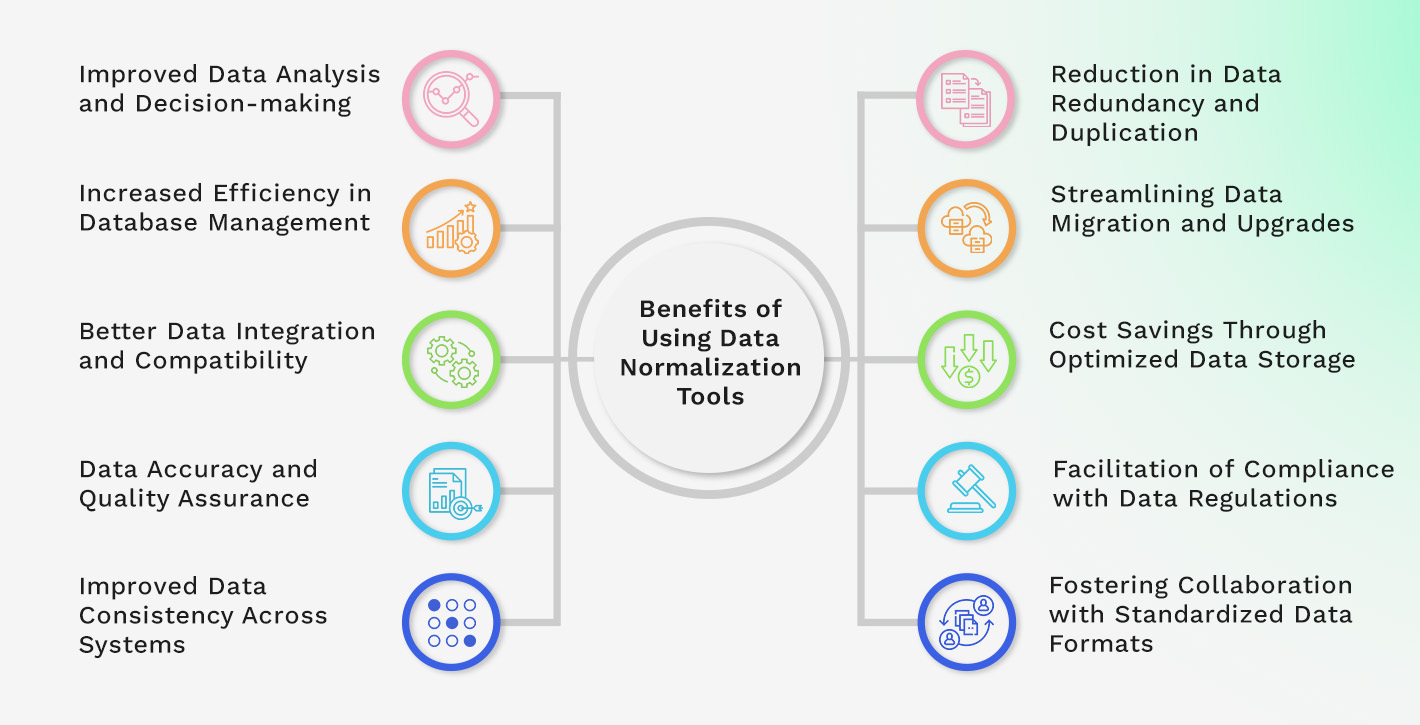
How To Choose a Data Normalization Tool?
Choosing the right data normalization tool is crucial for managing your data effectively. Here are some tips to help you select the best tool for your needs.
Data Quality Requirements
Start by assessing your data quality requirements. Does your data contain a high level of inaccuracies? Are you dealing with multiple sources of data that need to be consolidated? The tool you choose should ensure that your data's cleanliness is up to standard. It should be focused on accuracy, completeness, and relevance. Your data normalization tool should also clean data and maintain its quality over time. This includes capabilities for ongoing monitoring and cleansing.
Compatibility with Data Sources
Ensure the tool supports the different data formats and systems your organization uses. Whether it's traditional databases, cloud storage, or even unstructured data from social media and web sources, an efficient tool should integrate all these elements effortlessly.
Verify that the tool seamlessly integrates with your existing data sources, facilitating the flow of information without hiccups. This compatibility creates a smooth data pipeline that leverages the full potential of your data assets.
Ease of Integration with Existing Systems
Choose a tool that integrates with your existing software and systems. The integration process should be smooth and minimally disruptive to your ongoing operations.
Look for tools with plug-and-play capabilities or pre-built connectors for common platforms. This enables a cohesive data ecosystem that improves workflows. A tool that's difficult to integrate might cost more in time and resources than it’s worth.
Flexibility and Scalability
The tool you choose should adapt to any shifts in your company, scaling up or down as required. Select a solution that can handle the increased data load as your business expands, without causing performance bottlenecks. Also, consider whether the tool can accommodate new data types and emerging business needs. This agility will safeguard your investment and ensure the tool remains useful in the long term.
User Interface and User Experience
Look for a tool with an intuitive user interface (UI) that makes it easy for your team members to operate it, regardless of their technical expertise. A great user experience (UX) means less training required and faster onboarding for new users.
Pricing and Licensing Options
Choose a solution that fits your budget. It should also offer a cost structure aligned with your usage patterns and business size. Check whether the tool is provided on a subscription basis, as a one-time purchase, or with flexible pay-as-you-go options.
Scrutinize the licensing agreements too. Check for any limitations on the number of users, data volume, or the types of data it can handle. A clear understanding of the pricing and licensing models will ensure there are no surprises down the road and help you make a cost-effective choice.
Types of Data It Supports
When selecting a normalization tool, consider the diverse nature of your data. You need a tool that's versatile enough to handle different types of data. This includes structured data in relational databases and unstructured messiness of emails and documents. It should be robust enough to interpret and process different formats, languages, and even images or videos if that's relevant for your business.
Security Features and Compliance Standards
Choose a tool that guards your data against unauthorized access and ensures compliance with industry standards like GDPR, CCPA, or HIPAA. These features might include data encryption, access controls, audit trails, and regular security updates. Research the tool's compliance certifications and security protocols. Robust security features will protect your data's integrity and help build trust with customers.
Customer Support and Service Reliability
When problems or questions arise, a responsive customer support team can be a lifesaver. Evaluate the service reliability and the level of support offered before committing. Do they provide 24/7 assistance, live chat support, or dedicated account managers? How about the quality of their user guides, FAQs, and training materials? A provider with excellent customer service will help resolve issues swiftly and contribute to a positive experience.
Customization and Advanced Features
Look for a data normalization tool that offers customization options that allow you to tweak settings, define rules, and set up workflows that match your unique data requirements. Also, look out for advanced features like AI-driven suggestions, automated workflows, or real-time data processing capabilities. This can significantly improve the tool's value and enable you to achieve better insights.
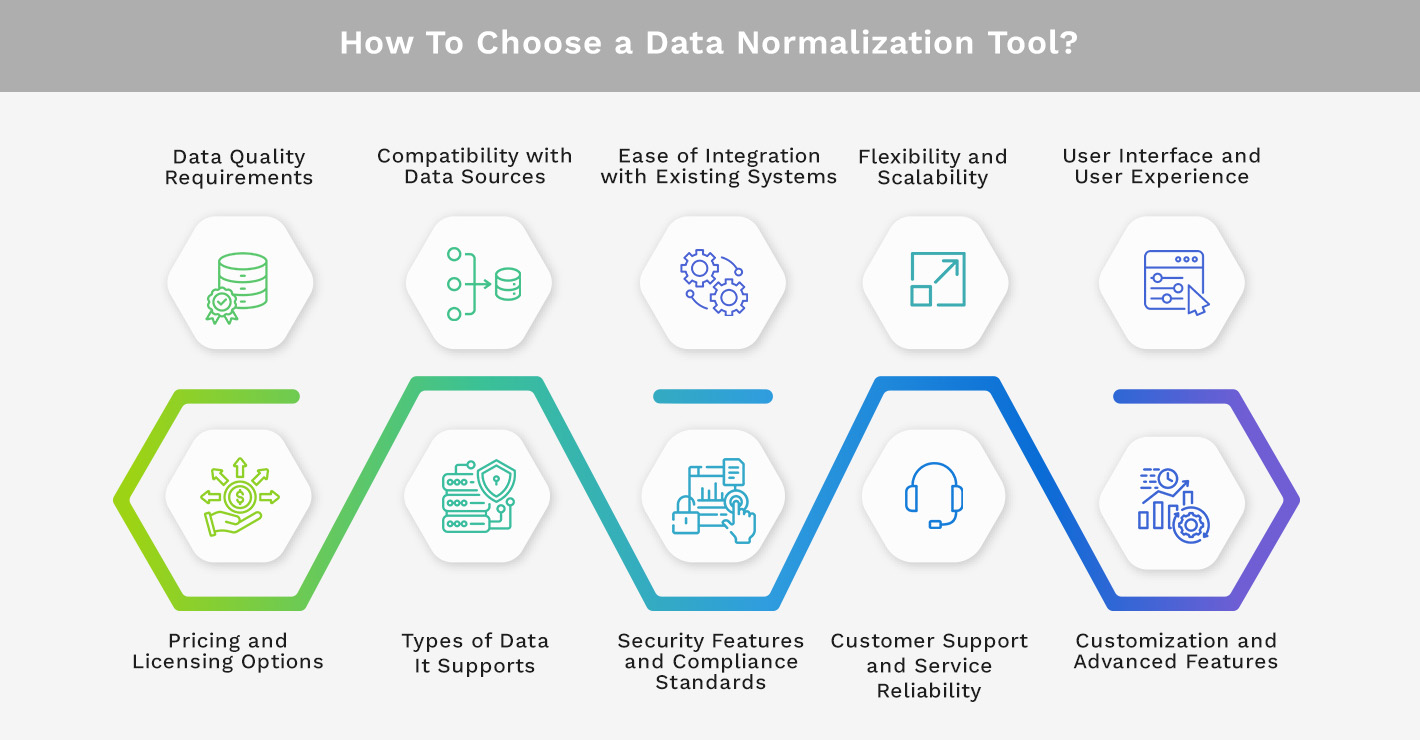
Normalize Your Data with Kohezion
Kohezion is designed to sweep through your data, removing inconsistencies and aligning your records. Its robust suite of features ensures that your datasets are normalized and optimized for peak performance.
Kohezion offers cutting-edge technology that's both powerful and user-friendly. This makes data normalization accessible for teams of all sizes and technical abilities. It provides a customizable platform that allows you to fine-tune your data normalization processes to fit your business objectives.
Kohezion’s commitment to security and a strong support system ensure a seamless and safe data normalization experience. Contact us today and transform your data into a strategic asset with Kohezion.
Conclusion
Data normalization tools tackle issues like inconsistent data and boost decision-making efficiency. When choosing a tool, consider factors like data quality, compatibility, scalability, user experience, pricing, and security.
Kohezion stands out with its user-friendly yet powerful features. Contact us and transform your data into a strategic asset.
Start building with a free account
FAQs About Data Normalization Tools
Yes, many modern data normalization tools are designed to handle real-time data processing. This ensures that data is standardized as it streams into your systems. This capability ensures timely decision-making and quick analytics.
Data normalization tools focus on organizing and standardizing data. Data transformation tools, on the other hand, convert data from one format or structure into another based on specific requirements. Both are important for effective data management.
Yes, there are data normalization tools tailored to specific industries, addressing unique data formats, standards, and regulatory requirements relevant to different sectors. These sectors include healthcare, finance, and retail.
To ensure data security, select normalization tools with robust encryption, access controls, compliance with privacy laws, and regular security updates. Always prioritize tools with strong security features and a good track record.


